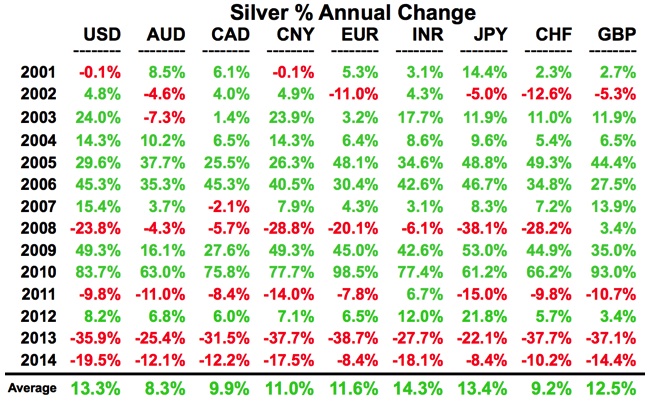For the hard-asset enthusiast, the gold-silver ratio is part of
common parlance, but for the average investor, this arcane metric
is anything but well-known. This is unfortunate because there's great
profit potential using a number of well-established strategies that rely
on this ratio.
In a nutshell, the gold-silver ratio represents the number of silver ounces it takes to buy a single ounce of gold. It sounds simple, but this ratio is more useful than you might think. Read on to find out how you can benefit from this ratio.

How the Ratio Works
When gold trades at $500 per ounce and silver at $5, traders refer to a gold-silver ratio of 100. Today the ratio floats, as gold and silver are valued daily by market forces, but this wasn't always the case. The ratio has been permanently set at different times in history - and in different places - by governments seeking monetary stability.
Here's a thumbnail overview of that history:
- 2007 – For the year, the gold-silver ratio averaged 51.
- 1991 – When silver hit its lows, the ratio peaked at 100.
- 1980 – At the time of the last great surge in gold and silver, the ratio stood at 17.
- End of 19th Century – The nearly universal, fixed ratio of 15 came to a close with the end of the bi-metallism era.
- Roman Empire – The ratio was set at 12.
- 323 B.C. – The ratio stood at 12.5 upon the death of Alexander the Great.
How to Trade the Gold-Silver Ratio
First
off, trading the gold-silver ratio is an activity primarily undertaken
by hard-asset enthusiasts like "gold bugs". Why? Because the trade is
predicated on accumulating greater quantities of the metal and not on
increasing dollar-value profits. Sound confusing? Let's look at an
example.
The
essence of trading the gold-silver ratio is to switch holdings when the
ratio swings to historically determined "extremes." So, as an example:
- When a trader possesses one ounce of gold, and the ratio rises to an unprecedented 100, the trader would then sell his or her single gold ounce for 100 ounces of silver.
- When the ratio then contracted to an opposite historical "extreme" of, say, 50, the trader would then sell his or her 100 ounces for two ounces of gold.
- In this manner, the trader would continue to accumulate greater and greater quantities of metal, seeking "extreme" ratio numbers from which to trade and maximize his or her holdings.
For those worried about devaluation, deflation,
currency replacement - and even war - the strategy makes sense.
Precious metals have a proven record of maintaining their value in the
face of any contingency that might threaten the worth of a nation's fiat currency.
Drawbacks of the Trade
The obvious difficulty with the trade is correctly identifying those "extreme" relative valuations between the metals. If the ratio hits 100 and you sell your gold for silver, then the ratio continues to expand, hovering for the next five years between 120 and 150, you're stuck. A new trading precedent has apparently been set, and to trade back into gold during that period would mean a contraction in your metal holdings.
What is there to do in that case? One could always continue to add to one's silver holdings and wait for a contraction in the ratio, but nothing is certain. This is the essential risk to those trading the ratio. It also points out the need to successfully monitor ratio changes over the short and medium term in order to catch the more likely "extremes" as they emerge.
Conclusion
There's an entire world of investing permutations available to the gold-silver ratio trader. What's most important is to know one's own trading personality and risk profile. For the hard-asset investor concerned with the ongoing value of his or her nation's fiat currency, the gold-silver ratio trade offers the security of knowing, at the very least, that he or she always possesses the metal.



